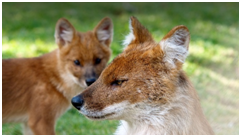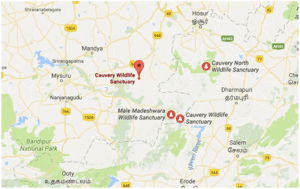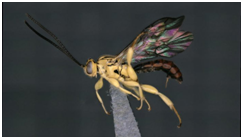Table of Contents
HEALTH ISSUES
1. NATIONAL ANTI-LEPROSY DAY 2023
TAGS: PRELIMS PERSPECTIVE- GS-II- HEALTH ISSUES
THE CONTEXT: In India, the World Leprosy Day is celebrated on January 30. It is celebrated as the Anti – Leprosy Day in India. This is to pay tribute to Mahatma Gandhi ji. Gandhiji had compassion towards the people affected by leprosy throughout his life.
THE EXPLANATION:
Leprosy
- Leprosy is also called Hansen disease. It is caused by bacterial infection. It is caused by the bacteria called Mycobacterium Leprae. It is a rod shaped bacteria. Leprosy is one of the oldest diseases and has still not been eradicated. The first occurrence of leprosy was reported as 600 BC. It has been mentioned in the oldest civilisations of the world such as India, Egypt and China.
- Leprosy is air borne. It affects peripheral nerves, skin, and respiratory tract. It takes three to five years for the symptoms to appear. If not treated on time, leprosy leads to disfigurement, disability and permanent nerve damage.
- Leprosy can be cured by Multi – Drug therapy.
Steps taken by GoI
- In 1955, the National Leprosy Control Programme was started.
- In 1993 – 93, the World Bank supported National Leprosy Elimination Project.
- National Leprosy Eradication Programme: It aimed to reduce the leprosy levels to less than one per 10,000 at national level by 2005.
- In 2019, Lok Sabha passed a bill on leprosy. The bill sought to remove leprosy as a ground for divorce.
National Leprosy Eradication Programme:
Objectives
- To reduce Prevalence rate less than 1/10,000 population at sub national and district level.
- To reduce Grade II disability % < 1 among new cases at National level
- To reduce Grade II disability cases < 1 case per million population at National level.
- Zero disabilities among new Child cases.
- Zero stigma and discrimination against persons affected by leprosy.
ENVIRONMENT, ECOLOGY & CLIMATE CHANGE
2. NOBLE’S HELEN: NEW SWALLOWTAIL BUTTERFLY FROM ARUNACHAL PRADESH
TAGS: PRELIMS PERSPECTIVE- GS-III- ENVIRONMENT,ECOLOGY AND CLIMATE CHANGE
THE CONTEXT: The butterfly population has been increasing in the state of Arunachal Pradesh in recent times. The state is called the nature trove and is known for its biodiversity.
THE EXPLANATION:
- Recently, a new swallowtail butterfly was spotted in the state. It is called the Noble Helen. The species does not occur in India. Its origin is in China, Laos, Myanmar, Vietnam, and Cambodia. The butterfly has been disappearing in these countries and was recently spotted in India.
Butterflies
- The butterflies occur in all parts of the world except Antarctica. There are 18,500 butterfly species in the world.
- Of these 775 are Nearctic. The Nearctic includes tropical, subtropical, arctic, and temperate regions of North America.
- 7,700 are neo-tropical. Neotropical regions include eight biological terrains. They are south America, the Caribbean islands, Central America, Yucatan Peninsula, southern North America, southern Florida, and central Florida.
- 1,575 are Palearctic. Palearctic includes Eurasia, North Africa, and Arabian Peninsula
- 3650 are Afro-tropical. This includes Madagascar, Iran, the western Indian Ocean, and Pakistan
- 4800 are in Australian regions.
Butterflies in India
- In India, butterflies occur in Eastern Himalayas, Western Ghats, and in hills in the India – Myanmar border. These friends of humanity are becoming extinct mainly because of the loss of habitat.
VALUE ADDITION:
- A Himalayan butterfly named Golden Birdwing is India’s largest, a record an unknown specimen had held for 88 years.
- The smallest is the Quaker (Neopithecops zalmora) with a wingspan of 18 mm and forewing length of 8 mm.
Other State Butterflies:
- Maharashtra was the first in the country to announce its state butterfly (Blue Mormon).
- Uttarakhand has Common Peacock.
- Arunachal Pradesh has Kaiser-i-Hind Butterfly.
- Karnataka has the Southern Birdwing.
- Kerala has Malabar banded peacock or buddha butterfly.
- Tamil Nadu has declared the Tamil Yeoman Butterfly species (endemic to the Western Ghats) as the state butterfly.
3. WHAT IS ALBINISM?
TAGS: PRELIMS PERSPECTIVE- GS-III- ENVIRONMENT,ECOLOGY AND CLIMATE CHANGE
THE CONTEXT: Recently a partial albino dhole (Cuon alpinus) has been photo-documented in Cauvery Wildlife Sanctuary.
THE EXPLANATION:
About Albinism:
- Albinism is the result of cells that can’t produce melanin, the pigment needed to colour skin, scales, eyes and hair.
- This genetic condition gets passed to offspring when both parents carry the recessive gene. When albinism is present, the animal can appear white or pink.
- The production of melanin occurs within melanocytes, specialized cells that are present but not fully functional in albino mammals.
About Dhole
- The dhole or Asiatic Wild Dog is found in three clusters across India namely the Western and Eastern Ghats, the central Indian landscape and North East India.
- The Western and Eastern Ghats is a stronghold regions for dholes.
Conservation status
- IUCN Red List: Endangered
- The Wildlife Protection Act 1972: Schedule II
- CITES: Appendix II
About Cauvery Wildlife Sanctuary.
- It is extended over three districts, namely, Chamarajanagar, Mandya and Ramanagara in
- The sanctuary provides a vital link between Bannerghatta National Park in the north and BRT Tiger Reserve and Male Mahadev Hills Wildlife Sanctuary in the south.
- The area is drained by three rivers, namely, Cauvery, Arkavathi and Shimsha.
- Flora: The forest is primarily of dry deciduous and scrub types, but a wide range of forest types including moist deciduous, semi-evergreen, evergreen, shola, riverine, Hardwicke forest, etc.
- Fauna: Important animals found in the sanctuary are tigers, elephants, leopards, bison, wild dog etc.

4. WHAT IS SOLIGA ECARINATA?
TAGS: PRELIMS PERSPECTIVE- GS-III- ENVIRONMENT,ECOLOGY AND CLIMATE CHANGE
THE CONTEXT: Recently, the scientific community has named a new genus of wasp after the Soliga community.
THE EXPLANATION:
About Soligaecarinata:
- The Soligaecarinata is a new wasp that belongs to the subfamily Metopiinae of the Darwin wasps family Ichneumonidae.
- These are seen only in the Palaearctic region, Neotropical and Nearctic regions.
- This is the second genus of this subfamily reported from India and the first from South India.
- Scientists have named this wasp after the Soliga community.
Who are Soligas?
- Soligas are an indigenous tribe of Karnataka, inhabiting the peripheral forest areas near Biligiri Rangana Hills and Male Mahadeshwara in the Chamarajanagar district of Karnataka.
- The Soligas were dependent on hunting and shifting agriculture traditionally.
- They are the first tribal community living inside the core area of a tiger reserve in India to get their forest rights officially recognised by a court of law.
Key facts about the BiligiriRangan Hills
- It is located northwest of the Western Ghats and on the westernmost edge of the Eastern Ghats.
- The unique geographical positioning and diversity of habitats make BRT one of the richest areas for biodiversity in India.
- The Kapila and Cauvery Rivers flow through these hills.

SCIENCE AND TECHNOLOGY
5. WHAT IS A SPIDER STAR SYSTEM?
TAGS: PRELIMS PERSPECTIVE- GS-III- SCIENCE AND TECHNOLOGY
THE CONTEXT: Scientists at NASA have recently detected the first gamma-ray eclipses from a “spider” star system.
THE EXPLANATION:
About Spider Star System:
- It is a binary star system in which a super dense star (pulsar) spins quickly, eats another star.
- The super-dense object that begins to pull a matter from the companion resembles the habits of spiders of the genus Latrodectus, in which the female eats the male after mating, hence the name came.
- Initially, the dense pulsar strips material from the outer atmosphere of its companion, periodically shedding the gathered material in violent explosions.
- In the later stage of their lifetimes, the energetic particles streaming out of the pulsar can strip the atmosphere of its companion.
- In either case, the pulsar slowly erodes its companion over time.
Two Types:
- Black widows: Binary pulsar systems, in which the mass of a companion star is less than 5 percent of the pulsar.
- Redback: Binary pulsar systems in which mass of the companion star is from 10 to 50 percent of the pulsar.
What is a Binary star system?
- A binary system is one in which two stars orbit around a common centre of mass, that is they are gravitationally bound to each other.
What are pulsars?
- Pulsars are rapidly spinning neutron stars, extremely dense starscomposed almost entirely of neutrons and having a diameter of only 20 km (12 miles) or less.
- They emit concentrated streams of radiation far across the cosmos.
What are neutron stars?
- They are the remnants of giant stars that died in a fiery explosion known as a supernova.
- After such an outburst, the cores of these former stars compact into an ultradense object with the mass of the sun packed into a ball the size of a city.

